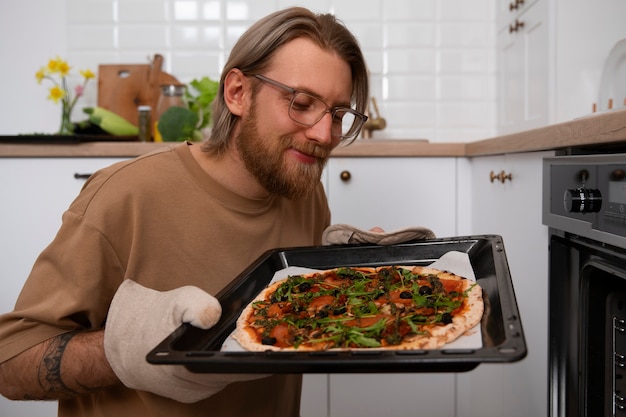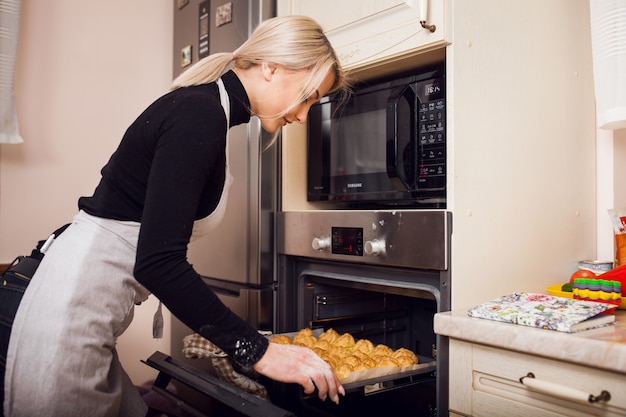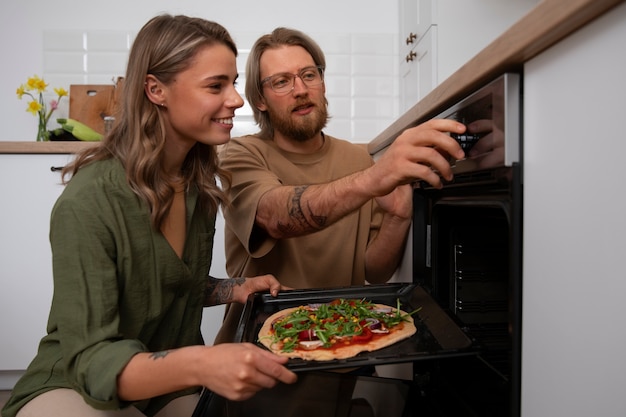Right, gather 'round, fellow adventurers and culinary enthusiasts! We're about to delve into the world of hobo dinners, those gloriously simple and utterly delicious foil-packet meals that have been delighting campers and backyard grill masters for generations. But mastering the art of hobo dinner cooking, especially nailing those perfect cooking times, can feel like a wilderness survival course. Fear not, my friends, for I'm here to share my hard-earned wisdom, gleaned from countless campfires and countless, well, let's just say, "less-than-perfect" hobo dinners. Get ready to unlock the secrets to creating a hobo feast worthy of any campfire or backyard gathering!
Part 1: Hobo Dinner Basics: A Foundation for Flavor

Imagine this: you're surrounded by the gentle crackle of a campfire, the smell of pine needles in the air, and you're about to enjoy a delicious meal that's been slowly simmering in a foil packet. That's the beauty of a hobo dinner – a simple, satisfying meal cooked in the embrace of nature. But what exactly is a hobo dinner, you ask? It's a delightful combination of your favourite ingredients, layered into a foil packet and cooked over an open fire or on a grill. Think of it as a miniature, self-contained oven, radiating flavour and warmth.
Unveiling the Hobo Dinner's Delicious Layers
Now, I'm a firm believer that the best hobo dinners are a testament to personal preference. There's no single "right" recipe; it's about creating a symphony of flavors that dance on your taste buds. But let's break down the essential components that make for a truly extraordinary hobo experience:
- The Protein Powerhouse: It all starts with a hearty protein base. Chicken, sausage, steak – these are your classic contenders. Don't shy away from exploring the world of beans, lentils, or even tofu for a vegetarian twist. Choose a protein that holds its own in the flavour department, providing a solid foundation for your culinary masterpiece.
- A Veggie Fiesta: The beauty of a hobo dinner is its versatility. Onions, peppers, carrots, potatoes – the possibilities are endless! Remember, vegetables add not only vibrant colour but also a symphony of textures and nutrients. Think of it as an edible garden in a foil packet!
- Flavor Boosters: Now, this is where things get exciting. Don't be afraid to unleash your inner chef and experiment with herbs, spices, garlic, onions, a touch of soy sauce, or a splash of wine. These flavor enhancers elevate your hobo dinner from ordinary to extraordinary. Remember, a pinch of spice can truly ignite your senses.
- A Touch of Moisture: Here's the secret ingredient: a little moisture goes a long way. A drizzle of olive oil, a splash of broth, or even some sliced tomatoes creates a delightful steamy environment within your foil packet. This helps everything cook evenly and adds an extra layer of flavor.
Foil: The Unsung Hero of Your Hobo Feast
Hold on, there's one more critical player in the hobo dinner game: the foil! It's not just about any old foil. We're talking heavy-duty stuff here, the kind labelled "heavy-duty" or "for grilling". It's all about avoiding a foil fiasco – a leaky packet is a recipe for disaster. Trust me, I've learned the hard way, and I'm here to save you from that sticky situation.
Part 2: Cooking Time: Decoding the Variables

Alright, let's get down to the nitty-gritty. Figuring out the perfect hobo dinner cooking time can feel like a wilderness puzzle. It's not as simple as setting a timer and calling it a day. The truth is, numerous factors influence how long your hobo feast needs to simmer in its foil cocoon. Here's a breakdown of the key variables:
1. Heat Source: The Fire's Fury
This is the foundation of your cooking time. A campfire, with its unpredictable flames and uneven heat distribution, requires a different approach than a steady, controlled grill. A roaring blaze will cook your meal much faster than a gentle bed of embers. It's about finding that sweet spot where the heat is consistent and allows for even cooking.
2. Packet Size: The Bigger the Better... Sort of
A larger foil packet, like a spacious oven, takes longer to heat through. Remember, we're aiming for even cooking, so larger packets require a longer cooking time. If you're feeding a crowd, adjust your cooking time accordingly, ensuring everyone gets their share of deliciousness.
3. Ingredient Symphony: The Orchestra of Flavor
Here's where things get interesting. Meaty ingredients like steak or chicken need a longer cooking time to reach that perfect level of doneness compared to veggies or beans. Potatoes, those starchy beauties, are notorious for being stubborn. It's a delicate balance – plan your cooking time strategically to ensure each ingredient sings in harmony.
4. Ingredient Thickness: A Matter of Degree
Consider the thickness of your ingredients. A thick steak needs more time to cook through compared to a thin slice of chicken breast. For faster cooking, consider cutting ingredients into smaller pieces, allowing the heat to penetrate more efficiently.
5. Foil Layers: A Balancing Act
This might seem like a small detail, but it makes a difference. More foil layers mean less heat penetration, potentially extending your cooking time. It's a balancing act – enough layers to create a secure seal but not so many that you're creating a foil fortress.
Part 3: Estimating Cooking Time: A Guide to Culinary Success

Right, so how do you actually translate all this information into a practical cooking time? It's a bit of a culinary dance, a blend of intuition and experience, but here's a general guide to help you navigate the hobo dinner landscape:
General Guidelines: A Starting Point
Here's a handy table to provide a rough estimate of cooking times, keeping in mind that these are just starting points, and you might need to adjust based on your specific ingredients and heat source.
| Ingredient | Approximate Cooking Time |
|---|---|
| Chicken (breasts or thighs) | 20-30 minutes |
| Steak | 30-45 minutes |
| Sausage | 20-30 minutes |
| Potatoes (cubed) | 20-30 minutes |
| Other vegetables (onions, peppers, carrots) | 15-20 minutes |
Testing Doneness: A Hobo Dinner's Success Story
Now, how do you know if your hobo dinner has reached its culinary peak? Don't worry, we've got you covered. Here are some trusty techniques to determine if your meal is ready to be devoured:
- The Poke Test: Gently poke your ingredients with a fork. If they feel firm and cooked through, you're good to go. But be careful not to rip the foil! You don't want your dinner to make a grand escape.
- The Steam Test: If you see a nice plume of steam escaping from the edges of your foil packet, it's a good sign that things are cooking nicely. This steamy symphony tells you that the heat is working its magic, transforming your ingredients into a delectable feast.
- The Smell Test: Trust your nose! If your dinner smells delicious and cooked through, you're probably on the right track. It's a delicious aroma that hints at the culinary masterpiece you're about to enjoy.
Part 4: The Art of Experimentation: Your Culinary Playground
Here's the beauty of hobo dinners: they're incredibly forgiving. Embrace the thrill of experimentation! Try different combinations of ingredients, adjust cooking times, and see what works best for you. It's how you discover your signature hobo dinner recipe, one that's uniquely yours and reflects your culinary creativity.
Hobo Dinner Inspiration: Fuel for Your Imagination
Need a little inspiration? Let's get those creative juices flowing with some tantalizing hobo dinner ideas:
Classic Hobo Dinner: A Timeless Treat
This is the one that started it all, a classic hobo dinner that never goes out of style.
- Chicken breast or thighs
- Potatoes (cubed)
- Carrots (sliced)
- Onions (chopped)
- Garlic (minced)
- A splash of olive oil
- Salt and pepper
Spicy Sausage Hobo Dinner: A Touch of Heat
Want a little kick? This recipe brings the heat with a spicy twist.
- italian sausage
- Red bell peppers (sliced)
- Onions (chopped)
- Garlic (minced)
- A splash of red wine vinegar
- Dried oregano and basil
- Salt and pepper
Vegetarian Hobo Dinner: Plant-Powered Delights
Don't worry, vegetarians, we haven't forgotten about you! This vibrant vegetarian option is bursting with flavor.
- Potatoes (cubed)
- sweet potatoes (cubed)
- Broccoli florets
- Carrots (sliced)
- Onions (chopped)
- Garlic (minced)
- A splash of vegetable broth
- Salt and pepper
Part 5: Avoiding Common Mistakes: Hobo Dinner Success Tips
Now that we've laid the foundation, let's talk about those common pitfalls that can derail your hobo dinner dreams. Here's a quick guide to avoid those culinary mishaps and ensure a successful hobo feast:
1. Overcrowding: Give Your Dinner Breathing Room
Don't cram your foil packet like a sardine can! Give your ingredients some breathing room. Overcrowding hinders even cooking and can lead to a soggy mess. It's about creating a harmonious balance, not a culinary free-for-all.
2. Sealing It Tight: A Culinary Tightrope Walk
This is crucial. You need a tight seal to prevent any leaks, ensuring your delicious concoction stays within its foil confines. Fold the edges over a few times, creating a secure barrier against any accidental escapes. Trust me, a leaky packet can turn a culinary adventure into a cleaning nightmare.
3. Foil Choice: A Matter of Strength
As I mentioned earlier, don't use flimsy foil. Invest in heavy-duty, reliable foil! It's worth the extra cost to avoid a messy situation. Think of it as an investment in a successful hobo dinner experience.
4. Preheating the Fire: The Foundation of Success
If you're using a campfire, make sure the coals are nice and hot before introducing your hobo dinners. This ensures even cooking and prevents any raw spots. It's like preheating your oven – crucial for a well-cooked meal.
5. Monitoring the Cooking Process: A Culinary Vigil
Don't just set and forget! Keep an eye on your hobo dinners and check on them periodically to make sure they're cooking properly. You might need to adjust the heat or cooking time depending on the situation. It's about staying engaged and monitoring the culinary symphony unfolding within your foil packets.
Part 6: Hobo Dinner for a Crowd: Feeding a Group with Flair
Planning a hobo dinner for a crowd? No problem! It's all about scaling up the ingredients and using larger foil packets. Think of it as a culinary buffet of hobo dinners, each packet bursting with unique flavours and combinations, ensuring everyone finds something they love.
Tips for Group Hobo Feasts: A Culinary Symphony for Many
- Divide and Conquer: Create separate foil packets for different ingredients to ensure even cooking. It's about creating a symphony of individual flavors, each packet representing a unique musical note.
- Pre-Cook Your Meat: This can save time, especially for larger groups. Pre-cooking meat allows you to focus on other elements and ensures everything is cooked to perfection. It's about streamlining the process for a seamless culinary experience.
- Embrace the Grill: A grill is a fantastic option for cooking multiple hobo dinners at once, especially if you're camping. It offers a consistent heat source, allowing you to create a symphony of hobo dinners with ease.
- Keep it Simple: Don't overcomplicate your recipes when you're cooking for a large group. Stick to basic ingredients and flavours. It's about simplicity, ensuring everyone enjoys the core essence of a delicious hobo dinner.
Part 7: Hobo Dinner Variations: Beyond the Campfire
Let's break free from the confines of the campfire! Hobo dinners aren't just for camping. They can be a fun and easy way to cook at home, too. Simply swap the campfire for your oven or a grill, and the magic continues.
Hobo Dinner in the Oven: A Culinary Adventure in Your Kitchen
Place your foil packet on a baking sheet and bake in a preheated oven at 375°F (190°C) until the ingredients are cooked through. This method is perfect for those days when you're craving the hobo dinner experience without the campfire setup. It's about bringing the wilderness into your kitchen.
Hobo Dinner on the Grill: Backyard Barbecue Delight
Place your foil packet directly on the grill over medium heat and cook until the ingredients are done. Be sure to rotate the packet every few minutes to ensure even cooking. It's about transforming your backyard into a hobo dinner haven, where the grill becomes your outdoor oven.
Hobo Dinner with Leftovers: Waste Not, Want Not
Don't let those delicious leftovers go to waste! They can become the foundation for new and exciting hobo dinner variations. Think leftover roast chicken, pork loin, or even a vegetarian casserole. Simply add some veggies, spices, and a little liquid, wrap it up in foil, and cook until heated through. It's about transforming leftovers into a new culinary adventure.
Part 8: FAQs: Your Hobo Dinner Questions Answered
Now, let's tackle those burning questions you might have about hobo dinners. Fear not, for we're about to shed light on the mysteries of this culinary delight.
1. What if my foil packet leaks?
It happens! If your foil packet leaks, don't panic. Try to salvage the situation by carefully transferring the contents to a new, clean foil packet and continuing to cook. But if the mess is too bad, it's best to start over with fresh ingredients. Remember, a little mishap doesn't mean the end of your hobo dinner dreams.
2. How long should I cook my hobo dinner?
Unfortunately, there's no single answer to this question. The cooking time will vary depending on your ingredients, heat source, and the size of your foil packet. Use the guidelines I provided as a starting point and adjust as needed. Don't be afraid to experiment! Remember, every hobo dinner is a unique culinary adventure.
3. Can I use aluminum foil?
While aluminum foil is commonly used for hobo dinners, some believe it can leach aluminum into your food. If you're concerned about this, consider using a different type of foil, like heavy-duty tin foil, or a disposable baking dish. It's about making choices that align with your culinary philosophy and health preferences.
4. What if my hobo dinner is burnt?
Burnt hobo dinners are a common occurrence, especially if you're using a campfire. If your dinner is slightly burnt, try to salvage it by carefully removing the burnt parts. But if it's severely burnt, it's best to start over. It's a reminder that even in the wilderness, culinary mishaps can happen.
5. Can I use a dutch oven instead of foil?
Absolutely! A Dutch oven is a fantastic option for cooking hobo dinners. It provides even heat distribution and can hold larger amounts of food. Just be sure to use a heavy-duty Dutch oven and heat it slowly to prevent the food from sticking. It's a testament to the versatility of hobo dinner cooking, adapting to different tools and techniques.
So, there you have it – my comprehensive guide to hobo dinner cooking times. Remember, it's all about experimentation, having fun, and creating your own culinary signature. Don't be afraid to try new things, adjust your cooking times, and let your creativity flow. And most importantly, enjoy the process! Happy cooking, and may your hobo dinners be filled with flavour and adventure!
Everyone is watching

Perfect Rice Every Time: The Ultimate Guide to Cooking Rice
Cooking TipsAs a self-proclaimed foodie, I've always been a bit obsessed with rice. It's the foundation of countless cuisi...

The Ultimate Guide to Cooking Asparagus: Tips, Techniques, and Recipes
Cooking TipsAsparagus. The mere mention of this spring delicacy conjures up images of vibrant green spears, crisp and burs...

Ultimate Guide to Cooking the Perfect Thanksgiving Turkey
Cooking TipsThanksgiving. Just the word conjures up images of overflowing tables laden with delicious food, the scent of r...

Prime Rib Roast Cooking Time Chart: Per Pound Guide
Cooking TipsPrime rib roast. Just the name conjures images of lavish dinners, crackling fires, and hearty laughter. It’s ...

Can You Cook Spaghetti with Gasoline? (The Shocking Truth)
Cooking TipsWe've all seen those crazy internet trends. You know, the ones that make you wonder, "Did someone actually try...
